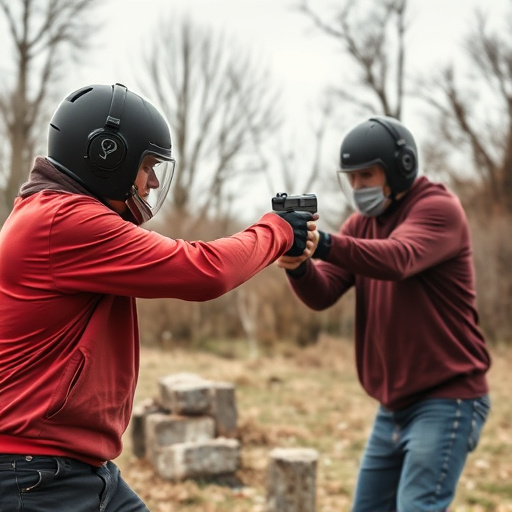Despite common misconceptions, pepper spray maintains potency in rain due to its active ingredient capsaicin creating a cloud that irritates eyes and respiratory system. In wet conditions, strategic targeting of face, eyes, and breathing areas plus proper storage can enhance effectiveness against diluting moisture.
“Discover the power and potential of oleoresin capsicum spray as a defense tool, especially in challenging wet conditions. This comprehensive guide explores how pepper spray works and delves into the unique factors affecting its effectiveness during rainfall. Learn about the strategies to ensure optimal performance when using pepper spray in rainy scenarios. Understanding these insights is crucial for those seeking effective self-defense solutions, especially in today’s diverse and unpredictable environments.”
- Understanding Pepper Spray: The Basics
- Rain's Impact on Pepper Spray Performance
- Effective Use Strategies in Wet Conditions
Understanding Pepper Spray: The Basics
Pepper spray, a powerful defense tool, works by irritating the eyes and respiratory system. It contains capsaicin, the compound that gives peppers their heat, suspended in a liquid solution. When deployed, the spray creates a cloud of capsicum oleoresin, which can temporarily disable an attacker, giving users valuable time to escape or seek help.
While pepper spray’s effectiveness is well-documented, its performance in wet conditions, like rain, has been a subject of interest. Surprisingly, pepper spray remains highly effective against attackers even in rainy scenarios. The liquid droplets penetrate the eyes and skin, triggering a burning sensation and reduced visibility, regardless of moisture. This makes it a reliable option for self-defense in various environments, including outdoor activities or situations where rain is a factor.
Rain's Impact on Pepper Spray Performance
Rain can significantly impact the performance and effectiveness of pepper spray, a popular self-defense tool. When used outdoors or in wet conditions, the chemical composition and spraying mechanism of traditional pepper spray may be affected by moisture. The active ingredient in pepper spray is capsaicin, which is derived from chili peppers and causes a burning sensation when it comes into contact with the eyes, skin, and respiratory system. However, exposure to water can dilute the concentration of capsaicin, reducing its potency.
In wet weather or after rain, pepper spray droplets may not adhere to targets as effectively, leading to reduced impact. The water in the air can also cause the spray to disperse more quickly, making it harder to aim and ensure contact with an aggressor. Additionally, strong rainfall can wash away or dilute the pepper spray, minimizing its ability to create a safe escape or incapacitate an attacker. These factors highlight the importance of considering environmental conditions when choosing and using self-defense tools like pepper spray, especially in regions prone to rain or high humidity.
Effective Use Strategies in Wet Conditions
In wet conditions, like rain or high humidity, pepper spray effectiveness can be reduced due to the water’s ability to dilute and disperse the oleoresin capsicum (OC) active ingredient. To counter this, users should aim for strategic targets, focusing on the face, eyes, and breathing areas. This ensures maximum contact with sensitive mucous membranes, where OC is most effective in neutralizing nerve signals.
Additionally, using a shield or covering your body can help contain the spray’s reach, minimizing dilution by rain or moisture. Storing pepper spray properly—dry and cool—before deployment is also key to maintaining its potency. Remember, while pepper spray remains effective in wet conditions, optimal results are achieved when used thoughtfully and with awareness of environmental factors like rainfall.
Pepper spray, a powerful personal defense tool, has shown remarkable effectiveness even in challenging wet conditions. Understanding how rain can impact its performance and employing specific strategies, like those discussed here, ensure optimal protection. By staying informed about the factors affecting pepper spray’s reliability in various environments, users can make confident decisions when choosing their self-defense mechanism, especially in regions with frequent rainfall.
